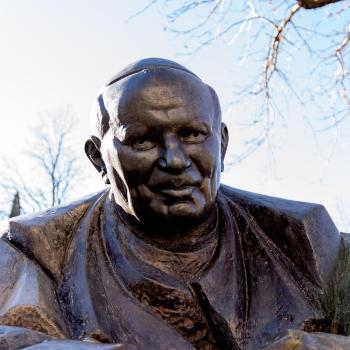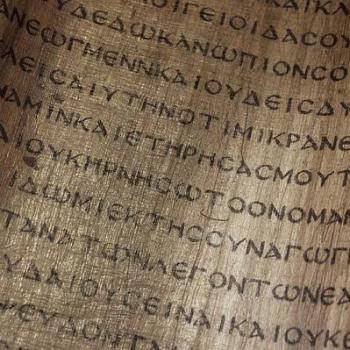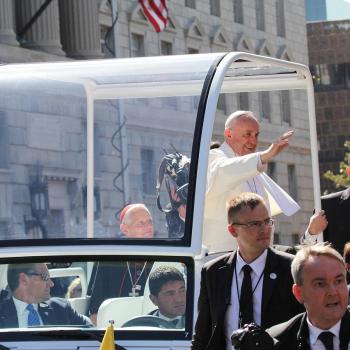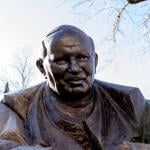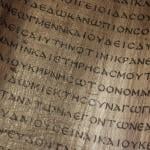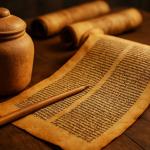PAT ASKS:
Why, and how, should Bible be taught in a public, non-religious, school setting? What is its value as part of a secular curriculum?
THE RELIGION GUY ANSWERS:
Surveys show there’s appalling ignorance about the basics of the Bible, especially among younger Americans. Even religious skeptics would have to admit that’s a serious cultural and educational problem, wholly apart from Scripture’s religious role. Bible knowledge is essential to comprehending the art of Giotto and Chagall, Bach cantatas and African-American spirituals, Shakespeare’s plays, countless allusions in novels and poems, historical events like the Protestant Reformation and the civil rights and anti-apartheid movements, the rhetoric of U.S. presidents, populism and pacifism, and on and on.
This fiasco is not what the U.S. Supreme Court intended when it outlawed mandatory Bible readings in public schools for creating an “establishment of religion” that violated the Constitution’s First Amendment (in Abington v. Schempp,1963). Though the justices barred ceremonial and devotional use of the Bible, they included this key clarification:
“It certainly may be said that the Bible is worthy of study for its literary and historic qualities. Nothing we have said here indicates that such study of the Bible or of religion, when presented objectively as part of a secular program of education, may not be effected consistently with the First Amendment.”
So the Supreme Court itself has explained the “why,” but the “how” has proven difficult during the ensuing half-century. School districts have been reluctant to apply the Court’s admonition, fearful of legal threats, wary of maneuvering through America’s growing religious diversity, and unsure how to obtain appropriate teachers and curriculums.
President Clinton’s education department provided brief guidance in 1995. Then in 1999 Freedom Forum’s First Amendment Center, the Society of Biblical Literature (a body of university and seminary Bible scholars), and the Bible Literacy Project (see below) sought to overcome “confusion and conflict” through a remarkable 13-page agreement, “The Bible & Public Schools: A First Amendment Guide.” This policy is endorsed by an unusually wide coalition that includes seven major public school organizations, evangelical and “mainline” Protestants, three prominent Jewish groups, the Council on Islamic Education, and others.
This booklet’s material about curriculum says “objective” Bible coursework should cover a variety of interpretations and “neither promote nor disparage religion, nor should it be taught from a particular sectarian point of view.” Teachers should be selected for academic qualifications, not religious views, with no non-school involvement, just as with other subjects. Textbooks should not be “devotional.” Schools should not “undermine or reinforce” students’ “faith in the Bible or lack of such belief.” Supernatural events in the Bible “may not be taught as historical fact.” Students “cannot be uncritically taught to accept the Bible as literally true, as history. Nor should they be uncritically taught to accept as historical only what secular historians find verifiable in the Bible.” This careful balancing act displeases some religious traditionalists.
While individual schools and teachers have crafted curriculums, there are three noteworthy players on the national level:
— The National Council on Bible Curriculum in Public Schools, based in Greensboro, N.C., uses the Bible itself as the textbook alongside “The Bible in History and Literature,” its anonymously written teacher’s manual based on the King James Version. The manual was first published in 1999 with the most recent revision in 2011. The National Council says its course has been used in 992 school districts in 39 states.
— In 2006 the aforementioned Bible Literacy Project of New York City published teacher and student editions of “The Bible and Its Influence” textbook, which follows the 1999 policy it helped produce. The compilers are the project’s chairman, entrepreneur Chuck Stetson, and veteran textbook editor Cullen Schippe. The project says its book is in use by 580 individual schools in 43 states.
— Next on the market will be “The Book: The Bible’s History, Narrative, and Impact,” a textbook recently issued in a preliminary draft with a school test run planned next year. This Oklahoma City-based effort is sponsored by the Green family, owners of the Hobby Lobby stores. The Greens’ lavish Museum of the Bible, set to open in 2017 near the U.S. Capitol, is the publisher of the book and provides related resources.
The debate over such materials is intense, and sometimes nasty. The National Council and its conservative Protestant backers have spent years attacking Bible Literacy and Freedom Forum’s Charles Haynes, who brokered the 1999 interfaith policy. For instance, the council posts prominent Texas Pastor John Hagee’s charge that Bible Literacy’s textbook is “a masterful work of deception, distortion and outright falsehoods” by which students are “greatly damaged.”
Bible Literacy largely turns the other cheek, politely answering critics and otherwise content to promote the professional quality of its glossy textbook and selling points for public school settings: multi-cultural sensitivity to various religions and an impressively broad lineup of authors, consultants, and endorsers.
In Texas, one of the states now mandating Bible coursework in high schools, the liberal Texas Freedom Network is central to the debate by issuing curriculum analyses by Southern Methodist University religion Professor Mark Chancey. He depicts the Bible Literacy textbook as academically solid and suitable for students from varied religions. He says the National Council’s material is slanted toward conservative Protestant beliefs, “clearly reflects a political agenda,” and “seems to Christianize America and Americanize the Bible.” Chancey has similar objections to the Museum of the Bible’s draft textbook, seeing a “religious purpose, pervading sectarian bias, and frequent factual errors.”
You can monitor the ongoing pros and cons on the publishers’ Web sites: www.bibleinschools.net, www.bibleliteracy.org and www.museumofthebible.org. Text of “The Bible in Public Schools”: www.sbl-site.org/assets/pdfs/bibleguide.pdf



